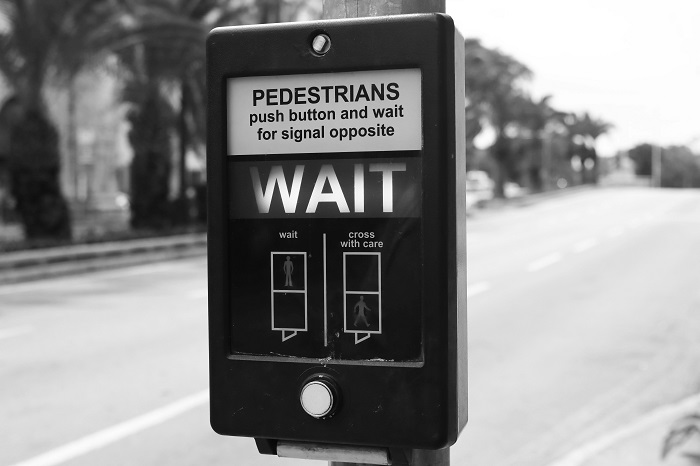Walking is often considered the primary and safest way to travel. However, this everyday activity in the United States has become increasingly hazardous. While many assume that our streets are pedestrian-safe, the reality is quite the opposite.
According to the Governors Highway Safety Association, pedestrian deaths are at their highest in 40 years. Between 2010 and 2020, pedestrian fatalities rose by over 53%, from around 4,300 to an excess of 7,500. Moreover, this rising trend is limited only to the US. In contrast, other influential, developed nations, like Australia, Japan, and Korea, reported a substantial drop in pedestrian deaths across the same observation interval.
This sharp rise in pedestrian fatalities is making walking riskier than ever. This blog explores the factors contributing to this troubling trend and highlights what can be done to make walking safer.
The Rising Toll on Pedestrians
Pedestrian deaths in the U.S. have reached alarming levels, with a 0.7% increase since 2021. In 2022 alone, over 7,520 pedestrian fatalities involved traffic crashes. Another 67,335 individuals were injured, marking an 11% increase in pedestrian injuries compared to 2021.
Moreover, the National Highway Traffic Safety Administration reveals that, on average, traffic crashes kill and injure a pedestrian every 70 and 8 minutes, respectively. Urban areas (85%) produce more accidents than rural areas (15%). In addition, nearly 80% of the crashes occurred in the dark. In contrast, only 19% occurred in daylight, 2% during dusk, and 2% around dawn.
Many factors contribute to this rise, including urban sprawl, higher speed limits, and the growing use of smartphones, which often leads to distracted driving. In cities and suburbs, poorly designed infrastructure adds to the danger, as many areas lack safe crossings, sidewalks, and adequate lighting. The following sections focus more on these factors.
How Poor Infrastructure Design Fuels Accidents?
Pedestrian infrastructure in the US is inadequate and ill-maintained, making everyday travel risky. Many American cities and suburbs are built with cars in mind, not people on foot. This “car-centric” design often includes:
- Wide, multi-lane roads, aka ‘stroads,’ that encourage high speeds
- Long distances between crosswalks
- Lack of sidewalks or bike lanes
These features create what experts call “pedestrian-hostile” environments. They make it hard and dangerous for people to walk safely. Moreover, most urban areas have poorly marked crosswalks, limited pedestrian signals, and dim lighting. This lack of infrastructure leaves pedestrians vulnerable, especially at night.
These design flaws are particularly concerning in lower-income areas, where residents are more likely to walk due to limited vehicle access. Without proper pedestrian paths, the accident probability increases significantly, putting the most vulnerable at the highest risk.
For example, last year’s fatal incidents involving pedestrians in Fayetteville underscore the urgent need for better safety measures. Rickey Harrington passed away after a 2011 Toyota rammed his bicycle. The police statement states that the accident took place on a crosswalk around the junction of Martin Luther King Boulevard and Shiloh Drive.
Another victim, Danny Fry, 77, was mowed down by a 2020 Kia Sorento while walking in Paragould. According to the investigating officers, the skies were clear, and the roads were dry during the accidents. These factors imply that the accidents could have been avoided and only occurred due to human error. Following such tragic incidents, the families of the victims often face overwhelming emotional and financial challenges.
A personal injury lawyer can provide critical support to the families of deceased victims by guiding them through the legal process. While such cases involve complex legal considerations, many personal injury attorneys, including car accident specialists, can represent pedestrians injured by vehicles. For instance, a Fayetteville car accident lawyer might be equipped to handle cases involving pedestrians struck by cars.
The reason is that these incidents still fall under traffic law and often involve auto insurance claims. Keith Law Group reveals that these lawyers can help victims or their families with the legal process. They investigate and establish the accident circumstances and demand compensation for damages resulting from inadequate infrastructure or driver negligence.
Moreover, high-profile cases can also pressure municipalities to improve pedestrian infrastructure, potentially preventing future accidents.
How Larger Vehicles Impact Pedestrian Injuries?
The increasing number of SUVs and trucks on the road is another factor contributing to pedestrian injuries and fatalities. These larger vehicles have higher front ends and mass, making them more likely to cause severe injuries or death when they strike a pedestrian.
A Journal of Safety Research study reveals that SUV collisions are eight times more likely to kill a child than passenger car collisions. Moreover, heavy vehicles like SUVs and pickups were involved in only 20.3% of crashes. However, they resulted in 38% of crash-related fatalities. In addition, these vehicles also cause fatal injuries that, in turn, result in higher medical expenses.
The Distraction Factor
Smartphones have introduced new risks for both walkers and drivers. When looking at your phone, you’re less aware of your surroundings. This increases the chance of accidents. Vox reports that over 3,5200 individuals died due to distracted driving.
A Cambridge Mobile Telematics (CMT) study uncovers that over 55% of drivers used their mobile devices while driving in 2022. Over 33% of this usage happened when the car was speeding over 50 mph (80.47 km/h). Moreover, on average, US drivers use their devices for 2 minutes and 11 seconds per hour. In comparison, their UK counterparts use them for a mere 44 seconds per hour.
Socioeconomic and Demographic Disparities in Pedestrian Safety
Not all communities face the same level of danger. Low-income neighborhoods and communities of color are disproportionately affected due to a lack of safe infrastructure. A significant number of pedestrian fatalities occur in neighborhoods with fewer crosswalks, inadequate lighting, and poorly maintained sidewalks.
Statistics reveal that areas with lower household incomes have higher pedestrian death rates compared to wealthier neighborhoods. Racial and demographic factors also play a role. Black and Hispanic communities, as well as Native American populations, experience higher pedestrian fatality rates.
Older adults and children are especially vulnerable due to slower reaction times and physical limitations. This makes them more likely to be involved in accidents.
How Can Technology Help?
Despite these challenges, new technologies offer some hope. Advanced driver assistance systems (ADAS) and automatic emergency braking are becoming more common in new cars. These features can help reduce the severity of pedestrian collisions.
Researchers are also developing innovative ways to improve safety. For example, Yahoo states that a team at the University of Zurich (UZH) is working on “event cameras”. Unlike traditional cameras, they feature smart pixels, which capture footage only if they detect movement. This helps avoid blind spots between frames, allowing for more precise obstacle detection. Moreover, the scientists reveal that this tech could be improved by integrating LiDAR sensors.
These cameras can monitor high-risk intersections and alert drivers and pedestrians in real-time. They can detect unusual movements, such as jaywalking, and trigger alerts to prevent collisions. Additionally, some cities are experimenting with intelligent traffic lights and speed enforcement technologies to create safer walking environments. While these solutions are still in their early stages, they offer a promising step toward reducing pedestrian fatalities.
Steps Cities Can Take to Protect Pedestrians
Technology alone won’t solve the problem. To reduce pedestrian risks, cities need to take proactive steps. Effective measures include:
- lowering speed limits in high-risk zones,
- adding protected bike lanes,
- redesigning streets to prioritize pedestrians and
- increasing the number of pedestrian-friendly zones.
Installing better street lighting, creating more pedestrian bridges, and adding visible crosswalks are other critical steps to make walking safer. Some cities are already making strides by implementing these measures. At the national level, the U.S. Department of Transportation launched a National Roadway Safety Strategy in January 2022. This plan aims to eliminate traffic fatalities through better road design, safer vehicles, and improved emergency response.
Walking should be a safe and accessible way to explore our cities. However, the rising number of pedestrian fatalities tells a different story. It reflects a need for better urban design, stronger safety measures, and more awareness from drivers and walkers.
By understanding these contributing factors and supporting changes in our communities, we can work toward making America’s streets safer for everyone. It’s time for communities, city planners, and policymakers to prioritize pedestrian safety and create a safer environment for all who walk.







Got a Questions?
Find us on Socials or Contact us and we’ll get back to you as soon as possible.